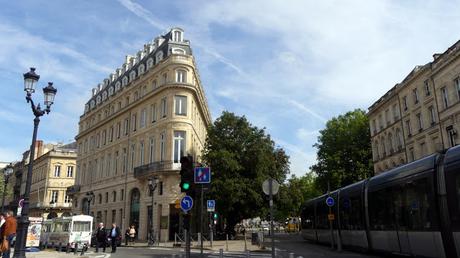
One of Bordeaux’s most distinctive sights is Maison Gobineau, the triangular-shaped building at the southern tip of Allées de Tourny that many compare with New York’s famous Flatiron Building. The ground floor is now familiar to many as the wine bar run by the Conseil Interprofessionnel du Vin de Bordeaux (CIVB) but… did you know that it used to trade as a cinema?
A little bit of background information first: Maison Gobineau was completed in 1816, executed by the architect Gabriel Durand to the designs begun in 1787 by his counterpart Victor Louis, who was also responsible for the nearby Grand Théâtre opera house which had opened in 1780. The building took shape on land that had been freed up in 1786 by the decision to demolish the fortified Château Trompette (which eventually disappeared from view in 1818, making way for Esplanade des Quinconces). This plot had been allocated to one Thibault-Joseph de Gobineau, a councillor at the Bordeaux Parliament, to become the location of his new private residence.
The Maison’s aforementioned triangular shape (possibly reminiscent of a boat?) went on to dictate the ways in which the northern flank of Allées de Tourny and the neighbouring Cours du 30 Juillet would intersect and develop respectively. Around 1920, the building – which old postcards would suggest had now become a hotel, including a ground-floor café-restaurant – was given a radical overhaul by architect Raymond Mothe, with the addition of two whole new storeys, raising the height of the building by some margin.
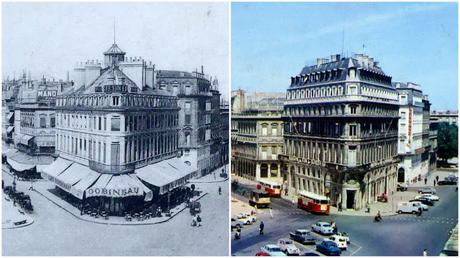
Maison Gobineau pictured around 1918 (including hotel and café-restaurant signs) and 1965. Spot the differences!
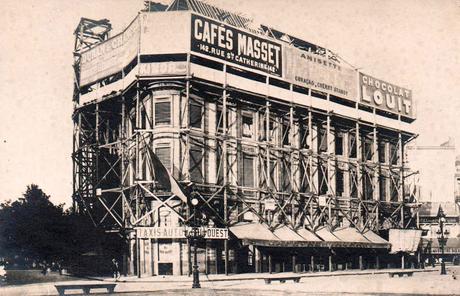
Taking things to the next level around 1920. Picture source: "Bordeaux, je me souviens" Facebook group.
Ever since 1948, Maison Gobineau has been the head office of the Conseil Interprofessionnel du Vin de Bordeaux, hence its modern-day ground-floor Bar à Vin incarnation which is open to the general public, who can freely view mid-20th century additions including stained glass windows conceived by René Butheau and a vine-themed Aubusson tapestry by Marc Saint-Saëns.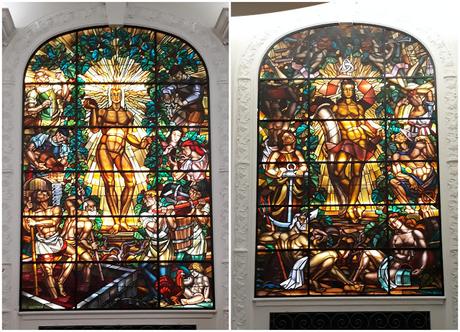
Elaborate stained glass windows inside the Bar à Vin, left: "Le triomphe de Bacchus"; right: "À la gloire de Bordeaux".
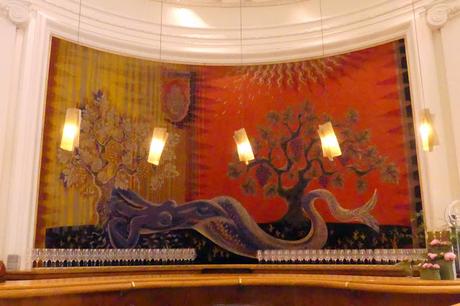
The Aubusson tapestry: "Le vin de Bordeaux, la naissance d'un cru".
All of which is very well, but what about the radical claim that Maison Gobineau used to be a cinema? Well, it just so happens that one evening I was perusing some of the postcards amassed over recent years, including this picture of Maison Gobineau circa 1908: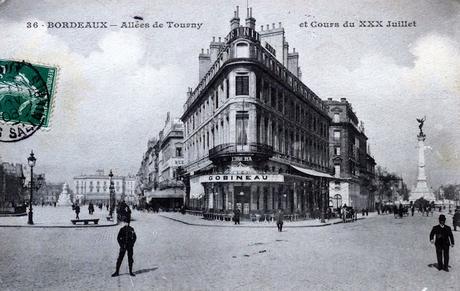
And I noticed that, just above the main entrance to the ground-floor entrance, the word “CINEMA” can be clearly made out:
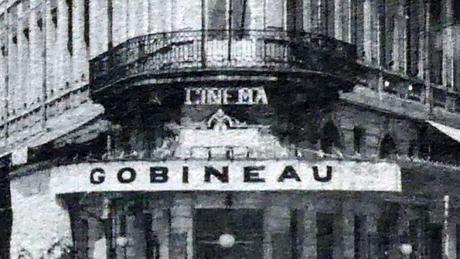
The explanation is that, in the latter years of the 19th century and the very early years of the 20th century, moving pictures were still very much a novelty act/activity, and usually a form of mobile entertainment of the sort you might experience at a funfair. To take in a film – which in those days weren’t so much works of fiction but rather everyday scenes that had been caught on camera – spectators would head to wherever the traveling projectionist was able to set up! Maison Gobineau was one such establishment, and the likelihood is that on designated days at designated times, patrons would congregate in a darkened room here inside Maison Gobineau and enjoy some films!
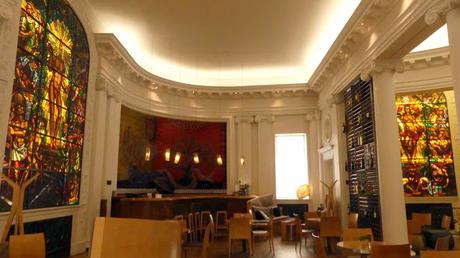
Is this where those early cinema sessions were held?
To illustrate this connection between at-first-glance residential buildings (or offices) and the nascent movie industry, a plaque that can be seen on the other side of Allées de Tourny (at number 10) celebrates the first screening in Bordeaux of moving pictures held there on February 29th 1896 in front of local dignitaries and reporters. The next day, sessions were held for the general public and, according to a contemporary news report, “une dizaine de tableaux, reproductions de la vie courante, ont littéralement émmerveillé les spectateurs”, i.e. the spectators were in awe before the ten-or-so scenes depicting everyday events. (Source: Pierre Berneau, Les débuts du spectacle cinématographique à Bordeaux.)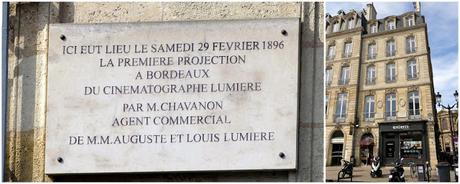
Just across the road from Maison Gobineau!
As far as more substantial establishments are concerned, the Olympia theatre (where the Auditorium concert hall now stands) and le Français theater (now a recently-revamped multiscreen cinema) are recorded as having included films in their evening music hall programmes as well as holding matinee screenings as early as 1898-1899. Bordeaux’s first dedicated cinema facility, le Cinéma Hélios, took shape at 5 Cours de l’Intendance from August 1902 onwards, showcasing the first “sound films” (not to be confused with so-called talkies, which only began in the late 1920s) and boasting a combined cinematographic/phonographic setup that was incompatible with mobile systems. (The establishment, which became known as Cinéma National Pathé and subsequently L’Intendance, closed in 1976.)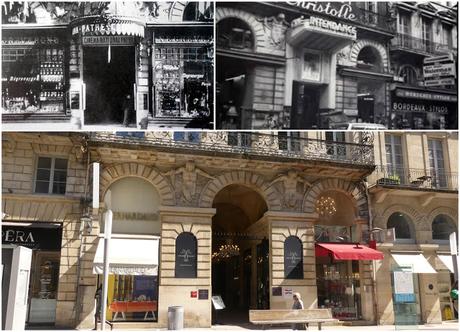
Cinéma Hélios, which became Cinéma National Pathé and later L’Intendance (top pictures sourced from "Bordeaux, je me souviens" Facebook group), and the same entrance today.
Within ten years, the center of gravity of Bordelais movie-goers was shifting for good from fairgrounds and the backrooms of bars to renowned multipurpose venues, who by now were putting on full movie programmes (for instance, former Invisible Bordeaux subject the Alhambra theatre housed the Alhambra Cinéma Gaumont), and additional dedicated movie theatres began mushrooming throughout the city; according to local newspaper Sud Ouest, by 1945 around 40 cinemas were in permanent operation!So, how long did Maison Gobineau operate as a cinema? This is a question to which Invisible Bordeaux does not currently have the answer, but it was certainly long enough to merit displaying its cinema credentials to passers-by with a sign above the door! Perhaps the next time you are at the CIVB's Bar à Vin, sipping on a glass of Médoc or Saint-Emilion, you could surprise or confuse the waiters by asking what time the film starts!
> Find it on the Invisible Bordeaux map: Maison Gobineau, allées de Tourny, Bordeaux> Further information about the ground-floor Bar à Vin: baravin.bordeaux.com > Ce dossier est également disponible en français !
